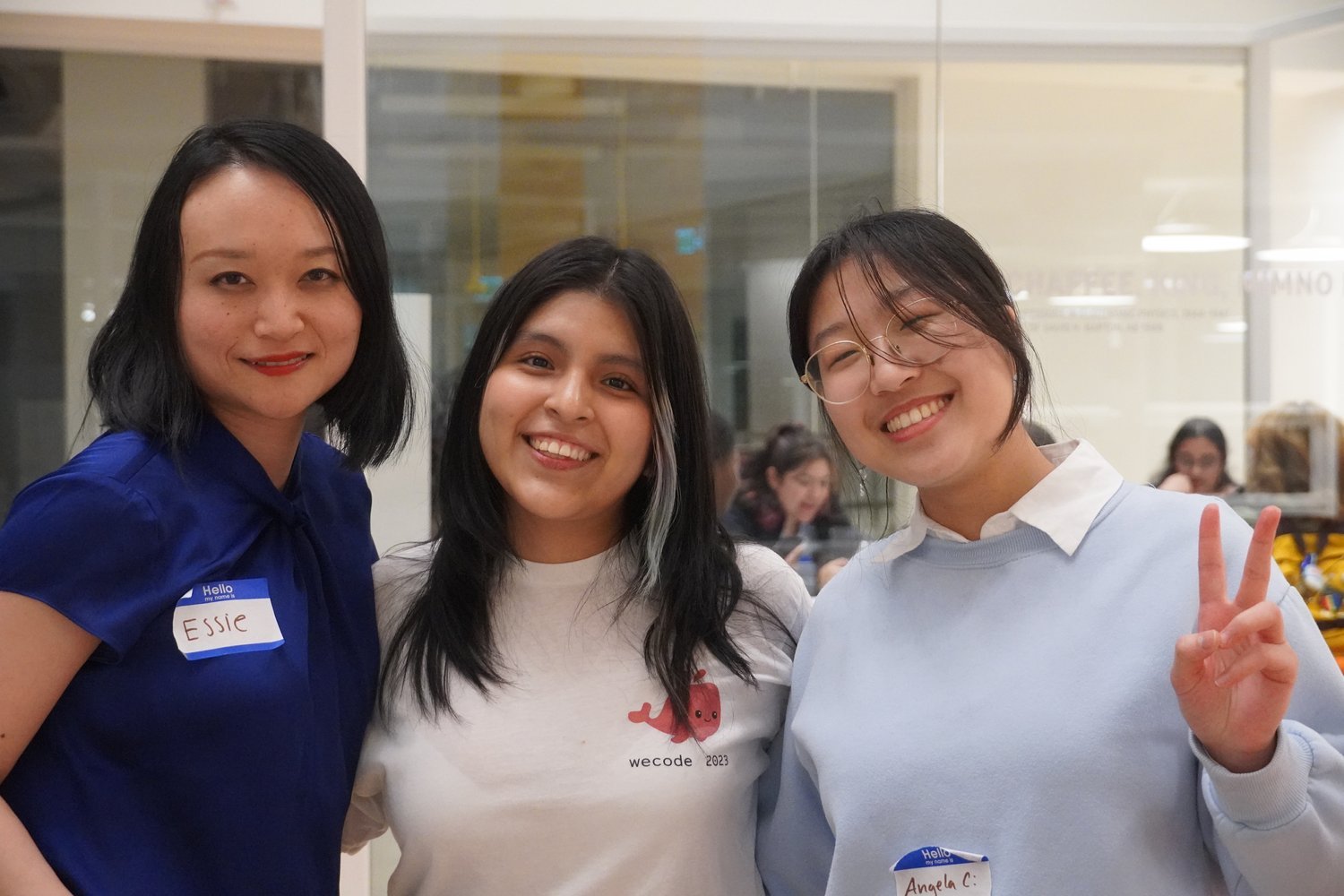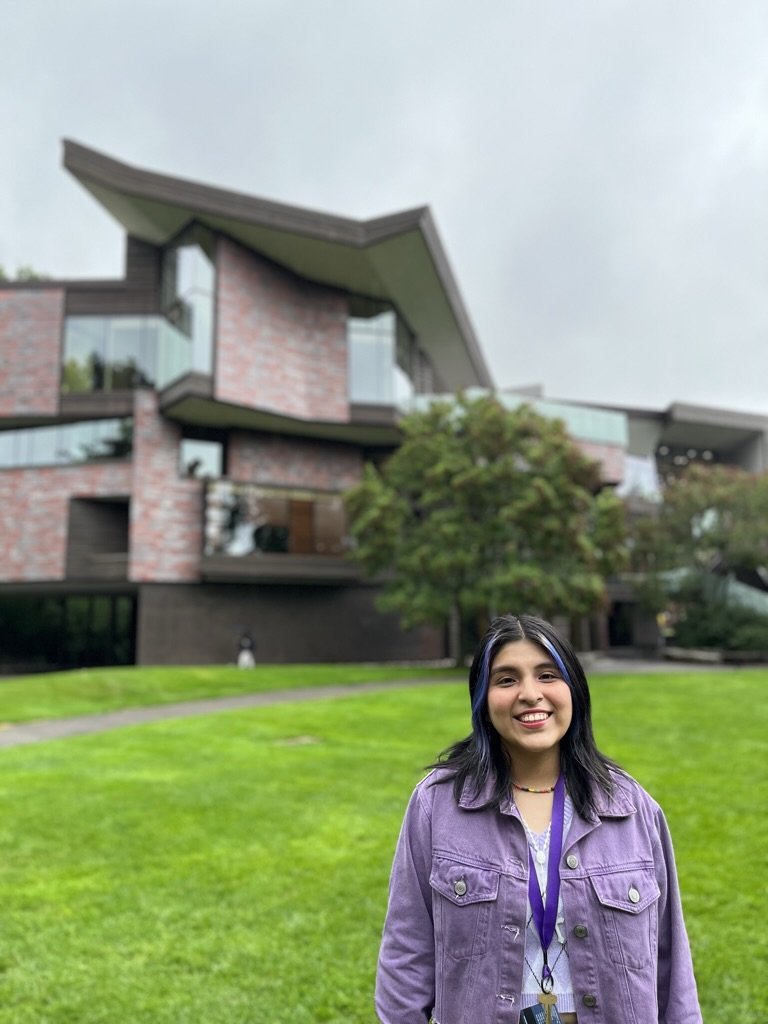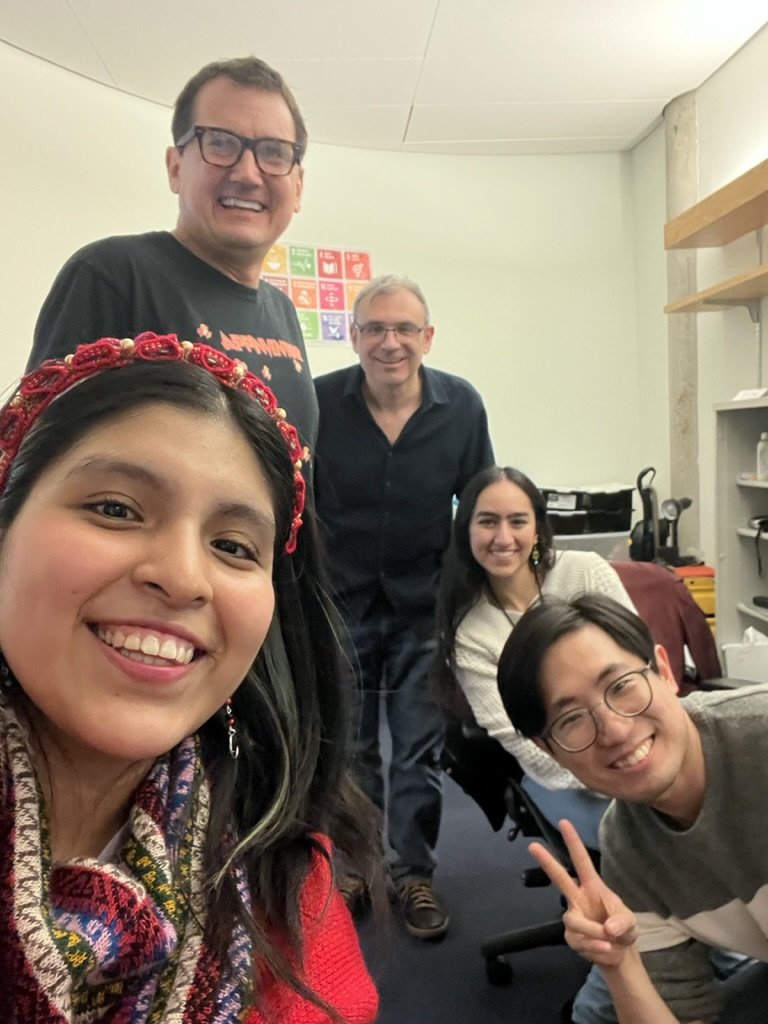Unconventional Journey Leads to Advocacy for STEM Diversity
Once a passive user of technology, Isabela Sanchez Taipe transformed into a creator of technology and advocate for STEM diversity after developing her first mobile app with MIT App Inventor.
Isabela Sanchez Taipe visiting the MIT App Inventor lab.
At only twenty years old, Isabela Sanchez Taipe wants to lead a technological revolution in Latin America. Born in the Rímac district of Lima, Peru, and raised by Quechua Peruvian women, Sanchez Taipe didn’t always think of herself as a participant in technology. Her worldview changed when she developed a mobile app for the first time using MIT App Inventor. That initial experience sparked her journey as an app developer for social good, a mentor for girls in technology, and a STEM advocate for Latin American diversity.
It started with a purr
Sanchez Taipe learned about MIT App Inventor when she was thirteen years old, through a STEM summer camp for Latin American girls. One of the workshops taught her how to make her first app, which displayed an image of a kitty that said “meow” when it was tapped. The app may have been simple, but it sparked a newfound curiosity in Sanchez Taipe. “Before App Inventor, I was a user of technology. I accessed it in internet cafes, and that was it,” she said. “But afterwards, my mindset changed from user to developer.” She went on to create another app during the camp, this time an encrypted messaging system for students to report bullying incidents to teachers. She left the camp realizing that technology could empower her to be an agent for change in her community.
“Before App Inventor, I was a user of technology. I accessed it in internet cafes, and that was it. But afterwards, my mindset changed from user to developer.”
When she returned home, Sanchez Taipe immersed herself in the world of computer science. She looked up tutorials on YouTube and signed up for free workshops for high school students at the National University of Engineering in Peru, where she learned HTML, CSS, and Javascript. She became involved in Chicas en Tecnologia, a Latin American nonprofit addressing the gender gap in technology, and Girl Up, a UN-founded leadership development initiative for girls. Through these organizations Sanchez Taipe pitched one of her favorite apps she’s developed, Colección de Heroínas. The app allows users to create a collection of images and quotes from female role models, with the intent of inspiring young girls to become heroines of their own causes. Sanchez Taipe was well on her journey to become a computer scientist and STEM advocate for Latin American girls.
Mockups of Isabela Sanchez Taipe’s Colección de Heroínas app.
Following an unconventional journey
Unfortunately, things didn’t go as planned. While Sanchez Taipe hoped to go to college to study computer science, she ended up working customer service jobs after high school to help her family. Still, she didn’t want to give up on her dreams. She started learning English on the side and applied for Laboratoria, a tech bootcamp for Latin American women, as well as Opportunity Funds, a financial aid program for international students applying to U.S. colleges. She was elated to receive acceptance into both.
Isabela Sanchez Taipe (right) with Mariana Costa (left), CEO of Laboratoria.
Once again, she was met with unforeseen challenges. Partway through the bootcamp, the COVID-19 pandemic hit, forcing the in-person programming to go virtual. It was difficult for Sanchez Taipe to continue online, having only one laptop at home and a sister who needed it for high school. When she began applying to U.S. universities through Opportunity Funds, she found the process complex and totally different from Peruvian universities. As decisions came out, she was deflated to receive no acceptances. It seemed like her dream of becoming the first college graduate in her family was not meant to be.
“It took me a long time to understand that having a different journey is fine. It makes me a better version of myself and I wouldn’t change that.”
Sanchez Taipe did not let these roadblocks get in her way. The following application cycle, she decided to try again. This time, she focused her time and effort on her top two choices—Williams College and Wellesley College. On March 19, 2022, Sanchez Taipe’s world changed when she received acceptance into Wellesley. “Sometimes I wish that my journey was the classic one—finishing high school and then going to college,” she reflected. “It took me a long time to understand that having a different journey is fine. It makes me a better version of myself and I wouldn’t change that.”
Dreams do come true
As a first-year student studying computer science at Wellesley, Sanchez Taipe is living her dream. She is taking a variety of exciting classes, from design thinking for engineers to a humanities course on video games. Outside of classes, she enjoys meeting other women in technology at conferences and pursuing her passion for music through an a cappella group.
Sanchez Taipe’s favorite class is the introductory programming course taught by Professor Franklyn Turbak, whose passion for education stands out to her. Knowing that Turbak was involved in the MIT App Inventor project, Sanchez Taipe decided to tell him how App Inventor played a vital role in her computer science journey. To her surprise, Turbak introduced her to the MIT App Inventor team, who in turn invited her to visit their lab. “It didn’t feel real,” she recalled. “I was meeting my heroes.”
Now Sanchez Taipe is joining the MIT App Inventor lab as an undergraduate researcher. It’s a true full circle moment for her: she started as a user of technology, transformed into a creator, and is now a developer of that same technology. She has big dreams for the future that are rooted in the community she came from. Having grown up in a district full of technology gaps, she intends to eliminate those disparities and create technology with her community’s needs in mind. She wants to live in a future where Latin Americans are not only interacting with technology, but also contributing to its advancement. She hopes to inspire the Latin American community to be the next leaders of the STEM revolution.









